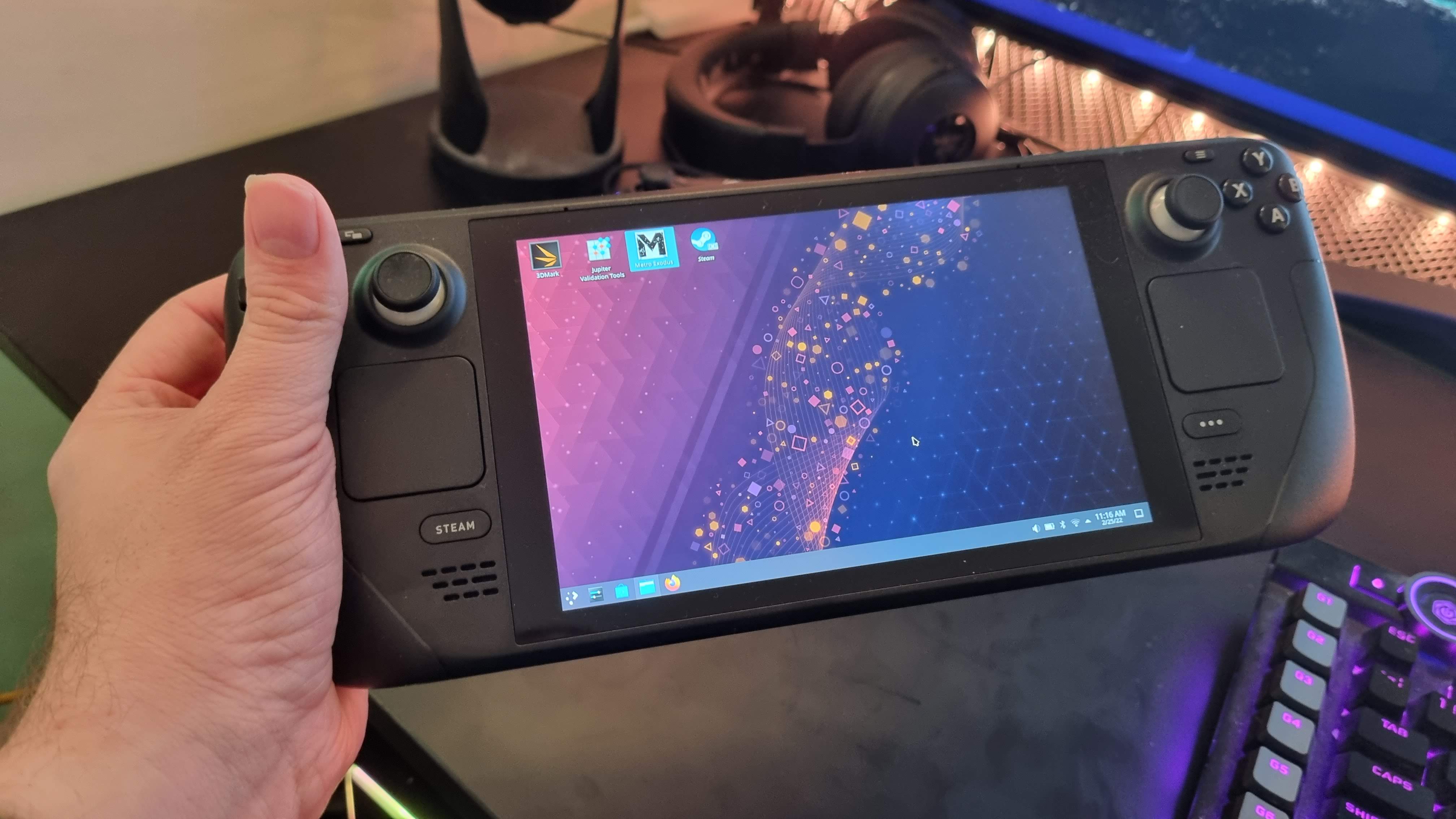How to set up your new Steam Deck
Prepping your Steam Deck for primetime

Now that Valve has finally gotten to shipping out all current Steam Deck orders by the end of 2022, many more patient gamers will finally have the impressive portable system in their hands.
However, the first challenge will be how to set up the Steam Deck in the first place. Unlike most other portables from Nintendo or even past Sony ones, the Steam Deck is more similar to the best gaming laptops or best gaming PCs. As such, you’ll have to prepare it to play games due to its OS being more open to customization.
But that’s what this guide is for, to walk you through the process of setting up your Steam Deck and outfitting it with some useful tools to boot. It’s all about optimizing your brand new portable PC to get the most out of it.
Step one: Power it on and check the basics
Before you do anything else, you must first charge your Steam Deck and then check the basic settings. By hitting either the Wi-Fi button in the top bar or pressing the Steam on the Deck’s left side, you can enter the Settings menu and alter options like volume, microphone, the screen brightness (protip: disable Adaptive Brightness), controller button mapping, and the regional language. Also download any software updates before installing other programs.
There are other options you can configure as well like connecting your Steam Deck to a monitor or TV by using a USB-C to HDMI adapter, and enabling Bluetooth connectivity to connect the Deck to wireless peripherals such as a controller or keyboard and mouse.
Step two: Choose your OS

The Steam Deck comes running with the Linux OS when it ships from the factory and uses Proton in order to enable Windows games to run on it. That said, there’s a mode called Desktop mode that you can access by holding down the Power button, and it turns the Deck into a full-blown PC. This mode also lets you install programs and even an OS like Windows 10 or 11.
First, you’ll need an SD card and an SD Card Reader, as well as a Micro SD card. After you’ve acquired those components, use this in-depth guide on how to install Windows 10 and 11. And if you ever want to go back to SteamOS gaming, it’s as easy as a quick switch of your Micro SD.
Sign up for breaking news, reviews, opinion, top tech deals, and more.
Step three: Upgrade your storage
There are three types of Steam Decks: the cheapest being $399 and coming with 64 GB of eMMC storage, the second option being $529 with 256 GB of NVMe SSD, and the third is $649 with 512 GB of NVMe SSD. Make sure you get the second or third option, as eMMC is terrible for gaming due to its much slower transfer rates.
From there you can use and switch out Micro SD cards for additional storage space, then enable the option to save games directly to the Micro SD instead of internal storage. While you can upgrade the internal storage itself, it’s a difficult process and far more recommended to simply use Micro SD cards instead.
When you purchase and insert a card for the first time, you’ll need to reformat it. Press the Steam button on the left side, then check under System Settings and choose format, which will delete any other data on that card to prepare it for the Steam Deck.
Step four: More advanced options

One of the best aspects of the Steam Deck is how customization it is, even approaching the levels of a PC. Once you start getting down the basics of this portable, there are plenty of other features and options that you can take advantage of.
Since you can install a Windows OS into the Deck, you can also install an Office suite into your Deck by using the Discover Software Center option to download one, such as LibreOffice.
If a game is running sluggishly on your Steam Deck due to it being too powerful or resource-hogging, you can use Remote Play by streaming it using your gaming PC. When picking a title from the Steam library, click on the arrow button instead of Play or Install, then choose your PC.
Customizing your Deck can go further than the face and shoulder buttons. The settings are incredibly robust, allowing for the rear buttons to be configured in any way. In the Controller Settings menu, you can map out the L4, R4, L5, R5 buttons to any other gamepad function, as well as keyboard/mouse controls and even system settings.
Step five: Installing emulators
Naturally, the Steam Deck is an absolute emulation beast, given its portability and customization options. Many gamers will most likely want to use their machine not only to play the latest PC titles but also to run plenty of retro games. And that’s where the EmuDeck app comes in.
EmuDeck is an incredibly robust application for emulation, as it will configure aspect ratios and hotkeys, download the appropriate box art for the ROMs, and integrate all these features into the Steam library.
There is some configuration you’ll have to perform on your part like downloading the standalone emulators from the Steam Deck market, as well as acquiring your own retro BIOS files and ROMs. Otherwise, the amount of work EmuDeck does for you is rather sizeable.

Named by the CTA as a CES 2023 Media Trailblazer, Allisa is a Computing Staff Writer who covers breaking news and rumors in the computing industry, as well as reviews, hands-on previews, featured articles, and the latest deals and trends. In her spare time you can find her chatting it up on her two podcasts, Megaten Marathon and Combo Chain, as well as playing any JRPGs she can get her hands on.